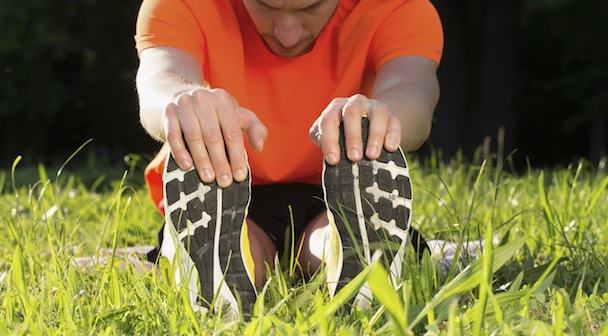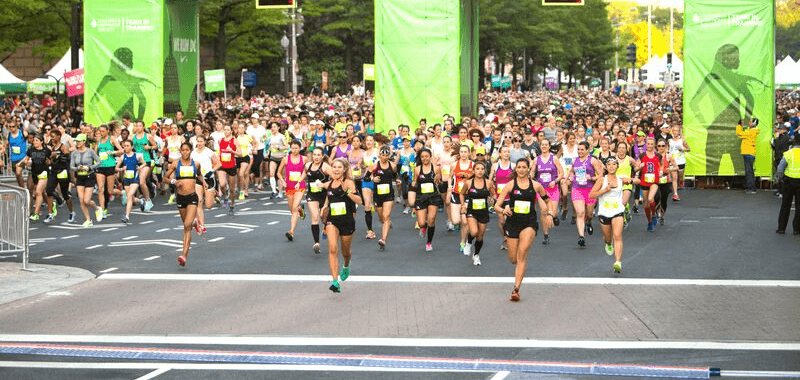Tabla de contenido
Stopping training requires more willpower and discipline for many than waking up early in the morning to go for a run. One of the reasons it’s often difficult is because it’s part of our routine and because it provides us with a profound sense of well-being, benefiting us physically but also emotionally.
However, especially when training for a specific event, being forced to stop due to illness, injury, or measures such as quarantine to prevent the spread of COVID-19 can lead to frustration and concern about losing the physical condition we had worked so hard to achieve. This raises the question: How quickly do we lose physical condition when we stop running?
It’s worth noting that this decline will be affected by multiple factors and will invariably differ from one individual to another.
The duration of our exercise routine is one factor to consider. For example, an elite athlete will initially perceive the loss of physical condition more quickly than an amateur runner. However, in percentage terms, the elite athlete will lose less condition than someone who has just started training.
How does a long break affect endurance running?
In terms of endurance, numerous studies have indicated that following the initial month of inactivity, there is a notable decline in VO2 max, which continues to diminish, albeit at a slower pace, if inactivity persists. During the first week, there is a negligible decrease in VO2 max and muscle power. However, after 12 to 21 days of inactivity, a well-trained runner can lose up to 7% of their VO2 max.
Below are reference tables:
Fitness level based on VO2max (Men)
Fitness level based on VO2max (Women)
How does muscle mass affect?
The same principle applies to muscle mass. Individuals who were engaged in strength training will notice muscle loss more quickly than those who were not. Although this loss may not be immediately apparent, after one month of inactivity, we can experience a decrease in muscle mass ranging from 1 to 5%. This reduction can also impact metabolism, resulting in decreased resting caloric expenditure and a greater propensity for fat accumulation.
If we maintain some level of activity during a period of inactivity, the loss of physical condition is mitigated. For instance, if we can not run due to injury but can participate in other physical activities, the decline in physical condition will be less pronounced.
The reassuring news is that everything can be reversed, Although regaining fitness may take longer than the initial decline. Through consistent training, restoring physical condition can take twice as long as the inactive period. For example, after 12 days of inactivity, it may require approximately one month of training to reach the level of fitness we had before the hiatus.
However, it’s crucial to understand that taking breaks to rest is essential regardless of experiencing a decline in physical condition. When ill, the body needs energy to combat the illness, and when injured, it requires adequate time for recovery. Ultimately, if we are not in optimal health, our ability to train effectively is compromised.
Loss of physical condition in fit athletes
Deconditioning in fit athletes does not seem to occur as quickly or drastically as in beginners. One study observed well-conditioned athletes who had been training regularly for a year. They then completely stopped exercising. After three months, researchers found that the athletes had lost about half of their aerobic conditioning.
Loss of physical condition in beginner athletes
The result is very different for new athletes. In another study, researchers had sedentary individuals start a cycling training program for two months. During those eight weeks, participants made dramatic cardiovascular improvements and substantially increased their aerobic capacity. However, after eight weeks, they stopped exercising for the next two months. Upon retesting, it was found that they had lost all the aerobic gains they had achieved and reverted to their initial fitness levels.
Tips for staying fit during downtime or breaks Don’t give up completely. Try to exercise at least once a week. For example, climb stairs. Cross-train when injured. A beneficial option is aqua running. To sustain endurance during detraining, decrease training volume by 60 to 90% and limit training frequency to 20-30% for athletes, while beginners can reduce it by 50 to 70%. Maintain the same training intensity. Incorporate bodyweight training, which requires no equipment.
Tips for staying fit during downtime or breaks:
- Don’t give up completely. Try to exercise at least once a week. For example, use stairs for climbing up and down.
- Cross-train when injured. A good alternative is water running, for example.
- To maintain endurance during detraining, reduce training volume by 60 to 90%, and training frequency by no more than 20-30% in athletes, but beginners can reduce it by 50 to 70%. The intensity of the training should remain the same.
- Use bodyweight training (no equipment needed) when traveling.
- Perform quick and high-intensity exercises two to three times a week.
- Practice efficient strength training methods.
- Use quick workouts to maintain physical condition when time is limited.
- Refresh your motivation and skills to set goals and energize your workouts.
- Remember that rest and recovery can be as important as training, so use this time to recuperate.
- Add 30-second sprints to your routine for quick physical conditioning.
- Short, high-intensity exercise burns more calories if time is limited.
- Maintain endurance with acceleration runs.
Looking for a plan that trains with you, not against you?
At running.COACH, we don’t just build a schedule. We create a smart, living plan that evolves with you. It understands your level, your race goals and your real life. Whether you sync your GPS watch or train straight from our iOS or Android app, your plan adjusts automatically as you improve.
From day one, you’ll feel the difference:
- A fully personalized, dynamic plan designed for you.
- Automatic sync and effortless workout tracking.
- Real-time updates when life happens, including missed sessions, new races or schedule changes.
- Simple, science-backed guidance to train smarter and recover faster.
🎁 Start today and enjoy your first 30 days free.
Because the best training plan isn’t one you follow. It’s one that follows you.app.











0 Comments